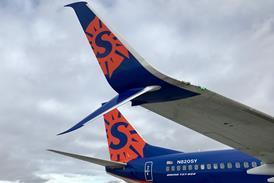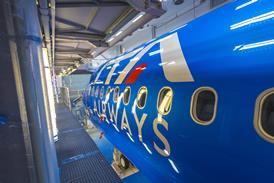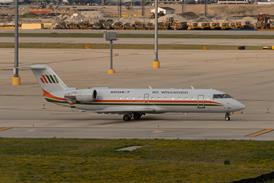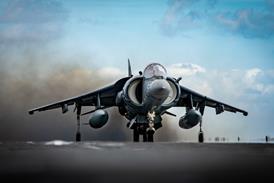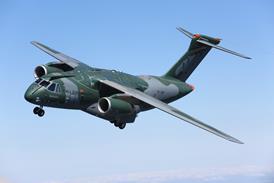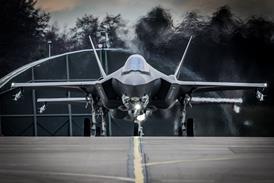Douglas Barrie/DUBAI
BRITISH AEROSPACE IS to offer the US Air Force and US Navy a thrust-vector-controlled derivative of its Advanced Medium-Range Air-to-Air Missile (ASRAAM) to meet the two services' AIM-9X requirements.
A UK/US Government-to-Government memorandum of understanding is being negotiated, covering an ASRAAM-based bid to meet USAF/USN plans to replace their AIM-9 Sidewinder infra-red short-range air-to-air missiles.
The Royal Air Force-standard BAe Dynamics ASRAAM is due to enter service on BAe Harrier GR7s in 1997.
The RAF Sidewinder-replacement requirement is aimed at providing an agile imaging-infra-red (IIR) missile which can engage and defeat a closing target before a close-in turning engagement develops.
The USAF/USN requirement, however, is understood to differ from that of the RAF in that it wants a short-range high-agility IIR AAM for dogfight engagements.
While the RAF approach for the ASRAAM is to use it out as far as, and into, the beyond-visual-range environment, the USAF would use the active-radar AIM-120 Advanced Medium-Range Air-to-Air Missile for this envelope.
While the ASRAAM meets the AIM-9X baseline requirements, BAe teamed with Hughes is aware that the USAF/USN's preferred solution is for an even greater-agility close-in capability.
The UK companies preferred solution is to use thrust-vector vanes, which deflect the jet plume, to provide the necessary close-in manoeuvrability to meet the desired performance.
See Dubai Show News P8-14
Source: Flight International

